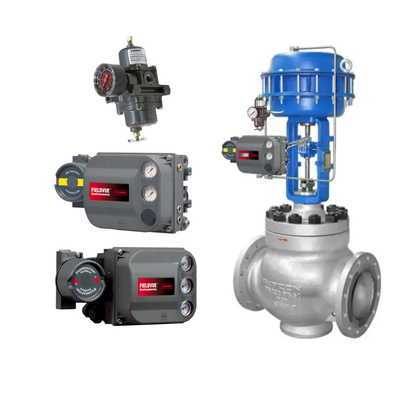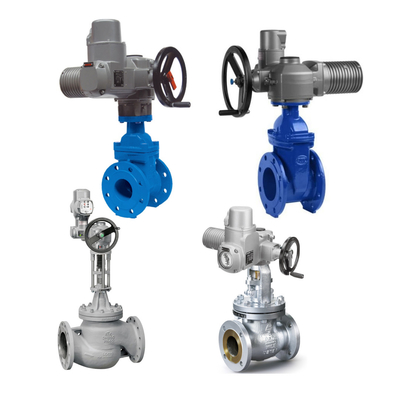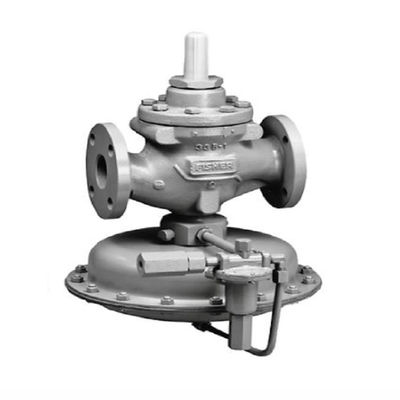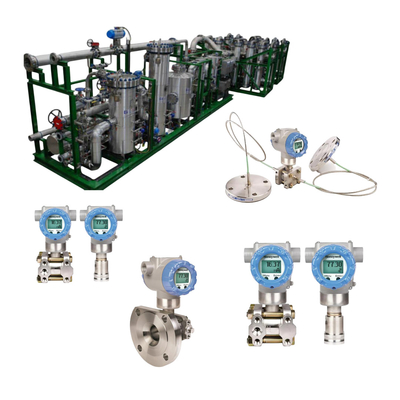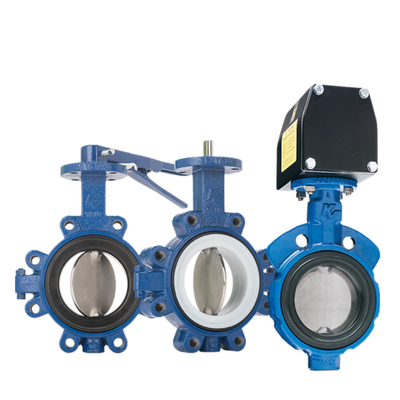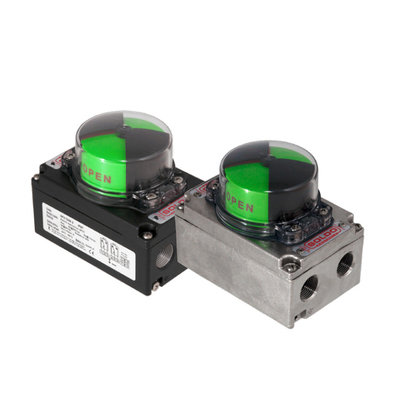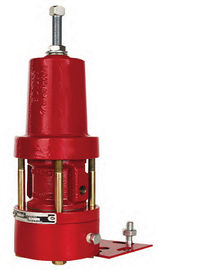The gas-open-gas-closed regulating valve is relative to the regulating valve as a whole. With the increase of gas pressure in the membrane head, the valve is gradually opened as gas-open valve, and with the increase of gas pressure in the membrane head, the valve is gradually closed as gas-closed valve. When there is no signal, the air-open valve is closed, and the air-closed valve is fully open.
Positive action of the control valve - reaction is relative to the pneumatic membrane control valve actuator, the upper part of the membrane head into the gas, the push rod downward movement is called positive action. The lower part of the air inlet, the push rod upward movement is called reaction.
Flow open - flow closed is for the medium. The direction of flow of the medium at the throttle port is called flow-open when it flows in the direction of the valve opening, and vice versa for flow-closed when it flows in the direction of the valve closing.

First, the role of the pneumatic actuator form
(1) Positive and negative action of the pneumatic actuator. When the input air pressure of the pneumatic actuator increases, the actuator moves downward, known as positive action; Conversely, when the input air pressure increases, the actuator moves upward, known as negative action (see Figure 9-16), the
(2) the positive and negative loading of the regulating mechanism. Valve spool has two forms of positive and negative loading. Spool down, the spool and the valve seat of the flow between the cross-sectional area of the reduction is called positively loaded valve; on the contrary, the spool down, the flow of cross-sectional area increase is called reverse loading valve (see Figure 9-16). For double-guided positively loaded valves, as long as the stem and the lower end of the spool, that is, reverse loading valve. Valves with nominal diameters Dg<25mm are generally single-guided and therefore only positively loaded.
(3) The role of the pneumatic actuator form. Pneumatic actuator has two forms of air-open and air-closed. Signal pressure increases when the valve is open, known as the air-open type; conversely, the signal pressure increases when the valve is closed, known as the air-closed type. As the actuator has a positive and negative action, control valve (with double-guided spool) also has a positive and negative action, so the pneumatic actuator of the gas open or gas shutdown that is the result of the combination, as shown in Figure.

For small-diameter control valves, usually used to change the positive and negative action of the actuator to achieve gas open or gas shut; for large-diameter control valves, it is usually to change the positive and negative action of the control valve to achieve gas open or gas shut.
Positioner
Positioner is used with pneumatic thin-film actuators.
- Positive action of the valve positioner: when the input signal increases, the output to the membrane head of the air pressure increases;
- Reverse action of the valve positioner: when the input signal increases, the air pressure output to the diaphragm head decreases;
Positive-acting actuator cooperates with positive-acting positioner to realize the function of positive-acting actuator;
Positive-acting actuator cooperates with the positive-acting positioner to realize the function of the negative-acting actuator;
Reverse acting actuator cooperates with positive acting positioner to realize the function of reverse acting actuator;
Reaction actuator and reaction positioner cooperate to realize the function of positive-acting actuator;
Third, the FC (gas open or fault closed) or FO (gas closed or fault open) of the regulating valve
The choice of gas open and gas shut-off is based on the safety of process production from the point of view to consider. When the gas source is cut off, the valve is in the closed position or open position safety. For example, a heating furnace combustion control, control valves installed in the fuel gas pipeline, according to the temperature of the furnace chamber or the temperature of the heated material in the furnace outlet to control the supply of fuel. At this point, it is appropriate to use the gas-open valve is safer.
Gas-open control valve is that the valve is fully closed in the case of gas cutoff, the valve will open when there is gas. No signal when the valve is closed, the input signal valve will open. And the larger the signal, the larger the valve opening. The valve is fully open when the signal is maximum.
Air to Open (Air to Open) is when the air pressure on the diaphragm head increases, the valve acts in the direction of increasing the degree of opening, and when it reaches the upper limit of the input air pressure, the valve is in the fully open state. Conversely, when the air pressure decreases, the valve moves in the direction of closing, and when there is no air input, the valve is fully closed. Therefore, sometimes air-open type valves are also known as failure to close (Fail to Close, FC).
Air off type (Air to Close) action direction is exactly the opposite of air open type. When the air pressure increases, the valve to close the direction of action; air pressure decreases or no air pressure, the valve to open the direction or full open until. Therefore, sometimes also known as fault open type (Fail to Open, FO). Then in the process of use, there are usually several fault location for (FO, FC, FL), in the valve Fail to Close / Fail to Open in the fault means: the valve action when the air source failure.
For the pneumatic valve failure position, mainly divided into several situations:
1, pneumatic valve device interlocking action case, the valve position should be the following cases:
- FC - loss of gas source, the valve is in the closed position
- FO - loss of gas supply, the valve is open position
- FL - loss of gas supply, the valve is in the moment position and has been maintained
- FLC-loss of gas supply, valve holds position but tends to close, valve in closed position (gas consumption in the cylinder is complete)
- FLO-loss of gas supply, the valve holds position but tends to open, the valve is in the open position (gas consumption in the cylinder is complete)
2, regulating valves or switching valves involved in the device interlocking action, the valve position should be the following cases:
- FC-loss of gas supply or solenoid valve power failure, the valve is in the closed position;
- FO-loss of gas source or loss of power to the solenoid valve, the valve is in the open position;
AFL/EFC-
- 1) loss of gas source solenoid valve is not de-energized, the valve is in the hold position;
- 2) regardless of the loss of gas source solenoid valve de-energized, the valve is in the closed position;
AFL/EFO-
- 1) loss of air supply solenoid valve is not de-energized, the valve is held in position;
- 2) regardless of whether the gas source is lost solenoid valve is de-energized, the valve is in the open position.
Pneumatic valve through the output signal to achieve the valve cut off, connect, regulate and other functions, its opening and closing speed is relatively fast, commonly used in fast two-bit cut off use, can also be used to regulate the flow use, with different accessories, can not reach a variety of different control methods.
Gas-open control valve with the increase in signal pressure and the circulation area also increases; and gas shut-off type is the opposite, with the increase in signal pressure and the circulation area decreases.

 Your message must be between 20-3,000 characters!
Your message must be between 20-3,000 characters! Please check your E-mail!
Please check your E-mail!  Your message must be between 20-3,000 characters!
Your message must be between 20-3,000 characters! Please check your E-mail!
Please check your E-mail! 
